Ain Dara عين دارة
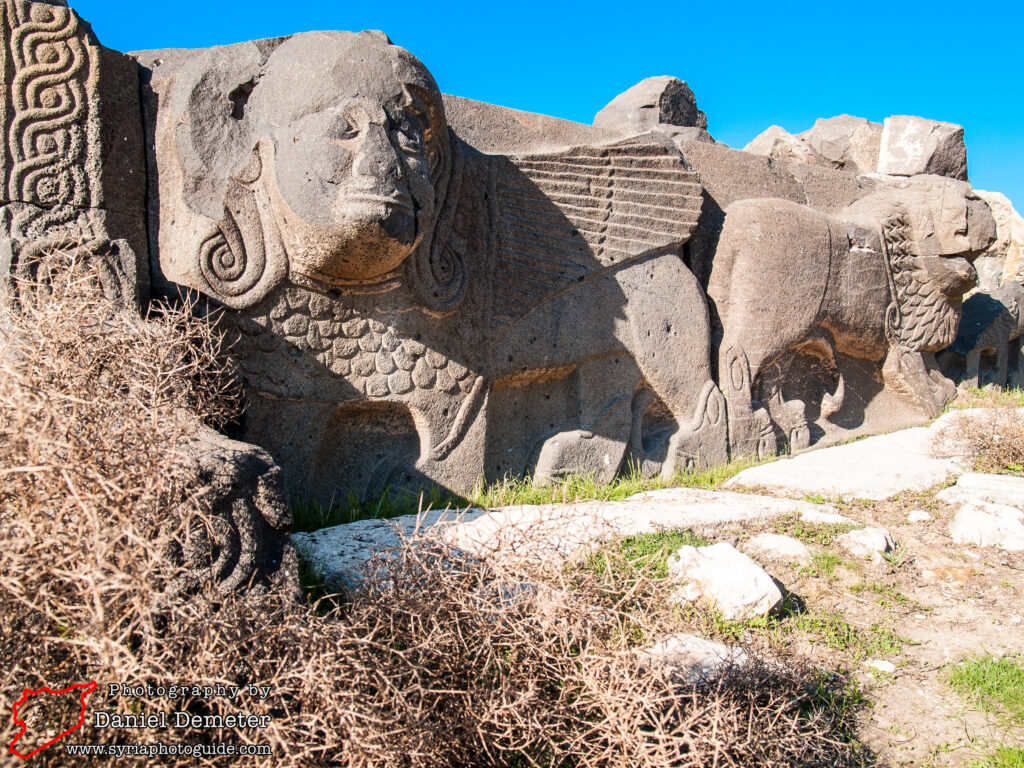
The fascinating temple of Ain Dara (عين دارة), located northwest of Aleppo (حلب) near the Kurdish town of Afrin (عفرين), is an incredible example of religious architecture from the Hittite period. The temple, constructed on a hill overlooking the Afrin River valley, is one of the best preserved of the Hittite sites in Syria. While the remains are modest in scale, the architectural style is unique and the decoration and detail are remarkable. The city of Ain Dara (عين دارة) was established at the beginning of the first millennium BC, following the Sea Peoples’ invasion of the Levant and the subsequent destruction of many of the cities along the Syrian coast. The city remained under the Hittites, based in Anatolia (modern day Turkey), until eventually coming under Seleucid control. The city was on the direct route from ancient Antioch (modern day Antakya) to Cyrrhus, the modern al-Nabi Houri (النبي هوري). The site remained occupied through the Seleucid period, but was apparently abandoned during Roman and Byzantine times. During the Umayyad period the site was walled for defensive purposes, and it remained occupied until the 16th century. There are no substantial remains of interest from any of these later periods.
The main point of interest in Ain Dara (عين دارة), and one of the most incredible pre-Roman remains in Syria, is the temple from the Hittite period. It dates from the tenth to ninth centuries BC and continues several traditions from the Bronze Age period of Syria and Turkey, though its layout is simpler than the contemporary temple at Tel Halaf (تل حلف). As you approach from the south entrance to the temple, the steps are flanked by two carved lions, a common Hittite theme continued in the frieze of lions and sphinxes that runs across the lower facade and vestibule. Note the four huge footprints (each one meter long) carved into the paving of the entrance. There are other Iron Age manifestations of such footprints, presumably intended to indicate that the god has graced the precinct with his/her presence. Recent evidence suggests that the temple was devoted to Ishtar, the Semitic goddess of fertility for whom the lion is often a symbol. A joint Syrian and Japanese project has carefully restored the relief panels around the temple base.
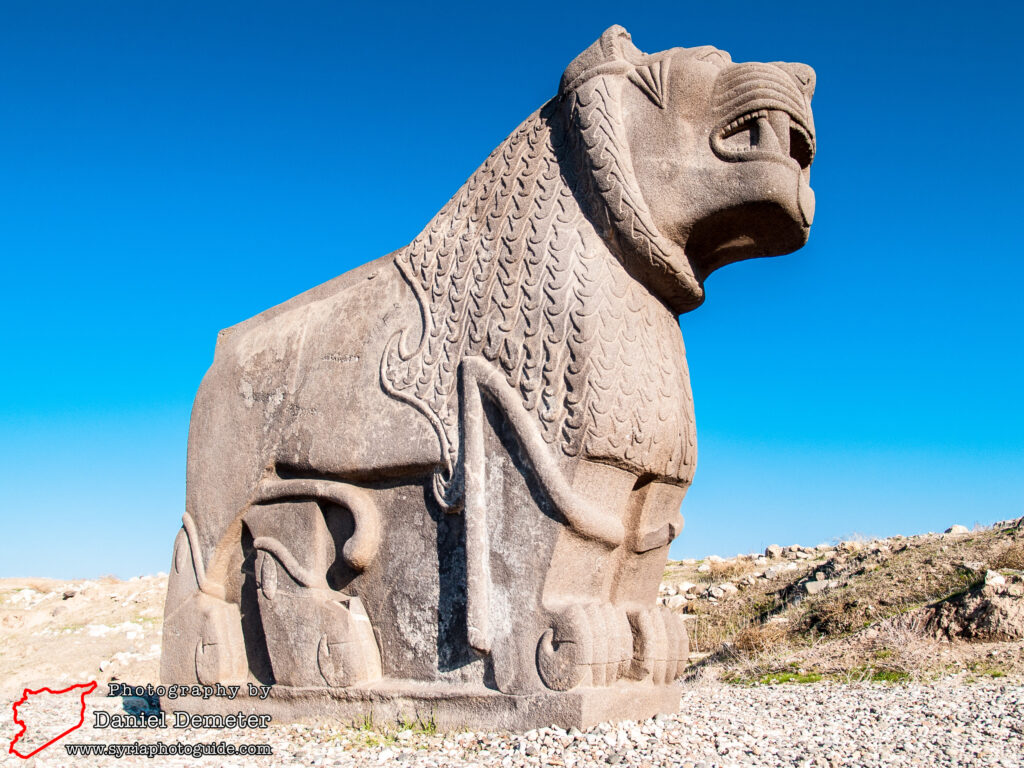
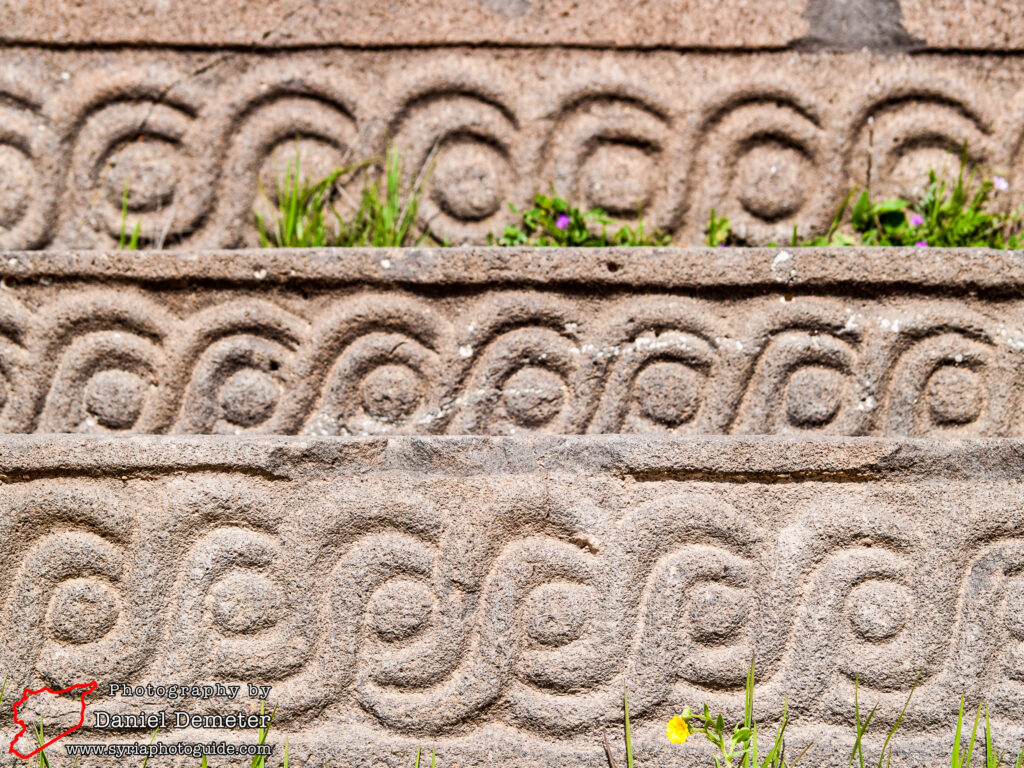
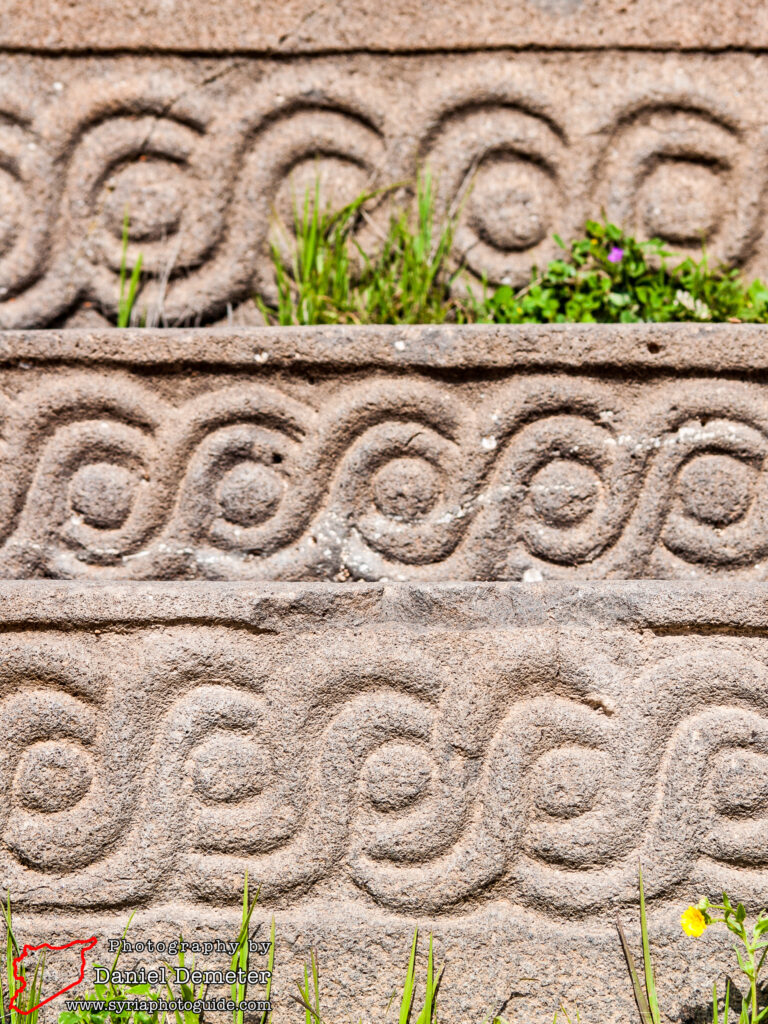
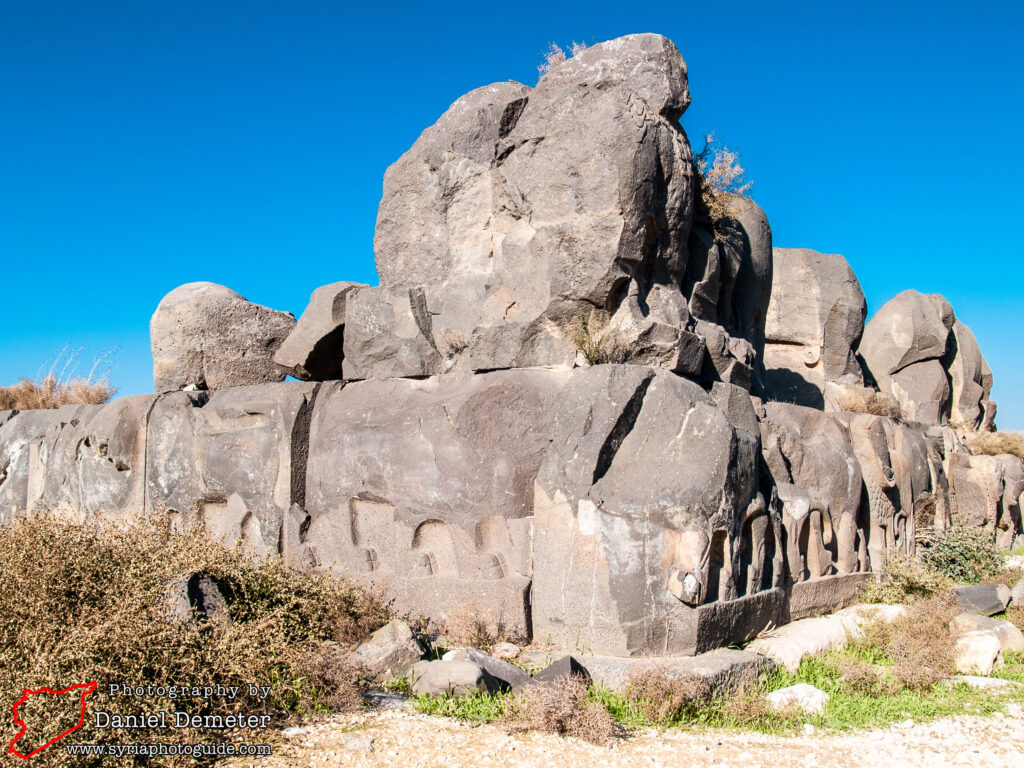
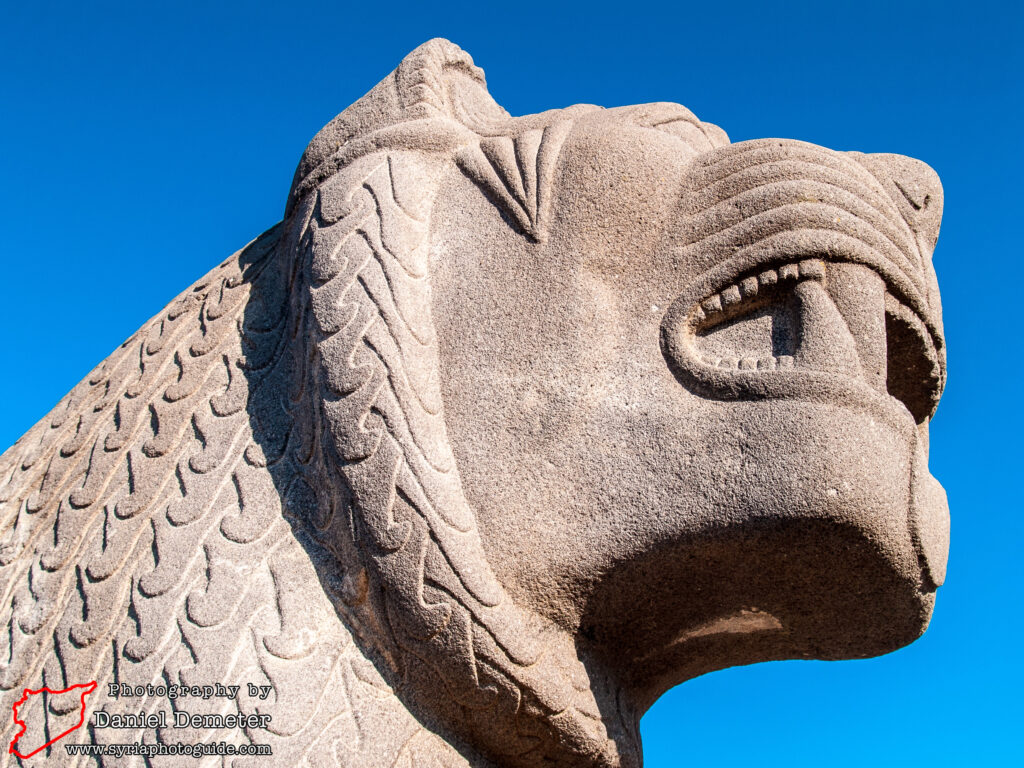
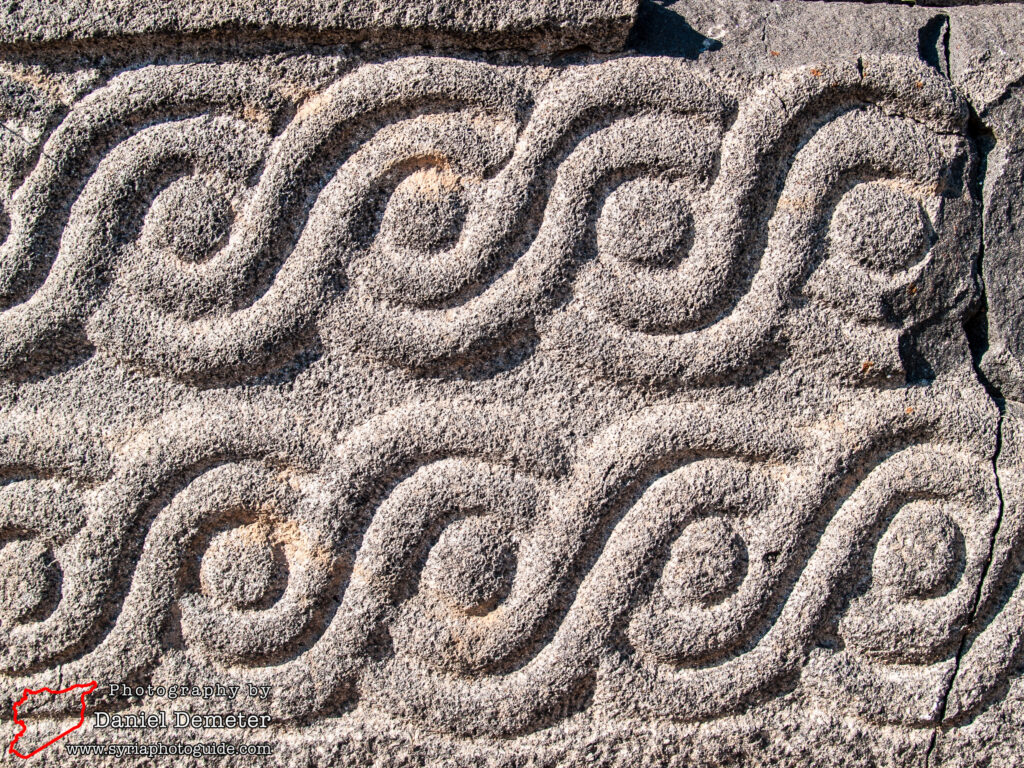
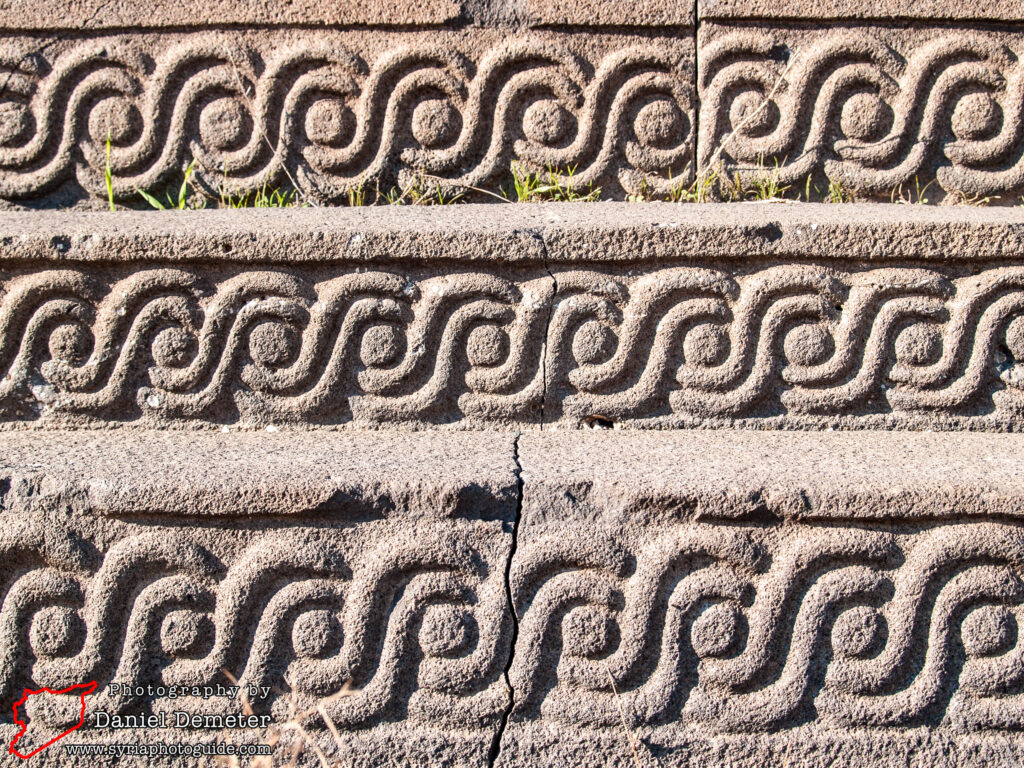
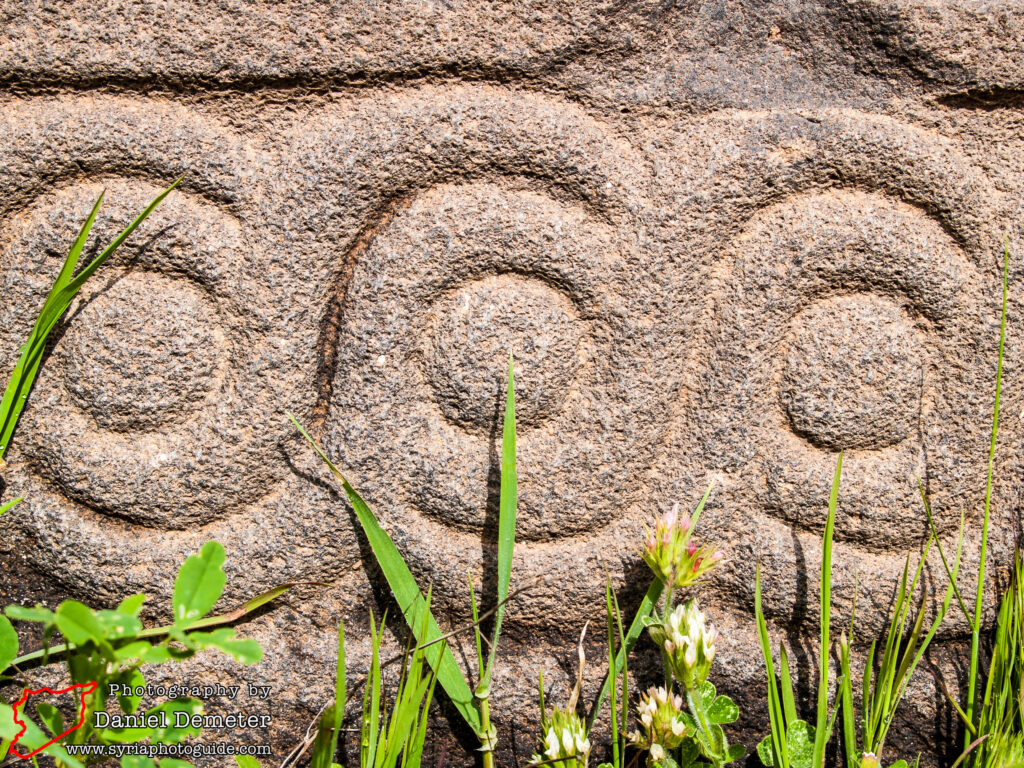
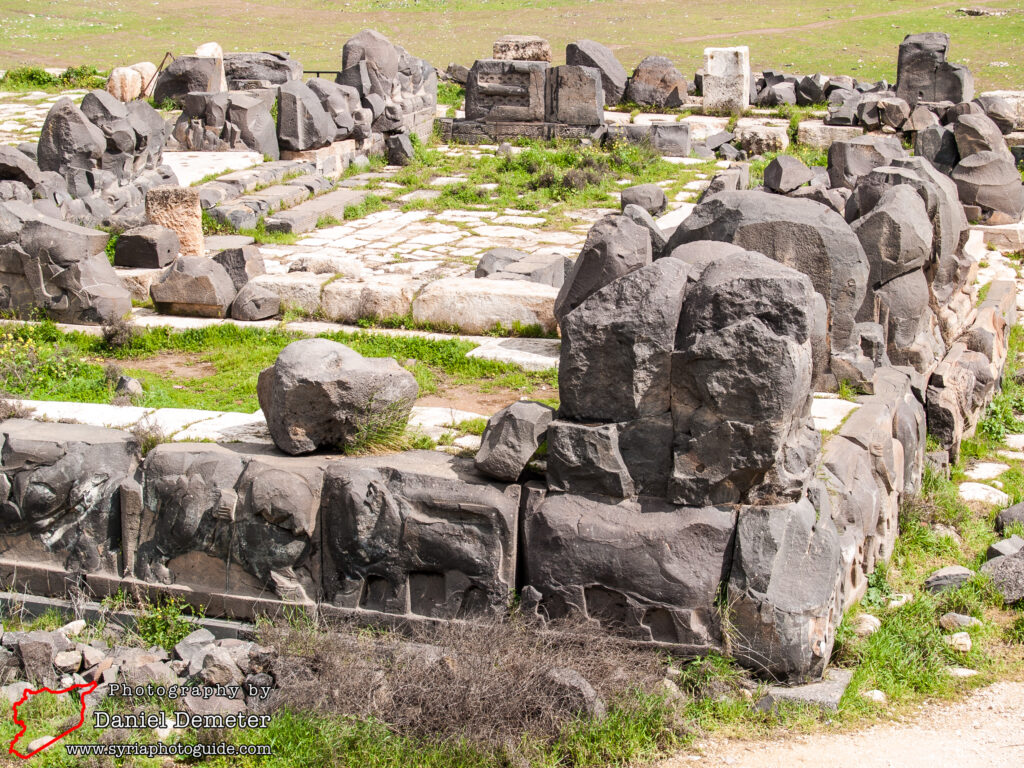
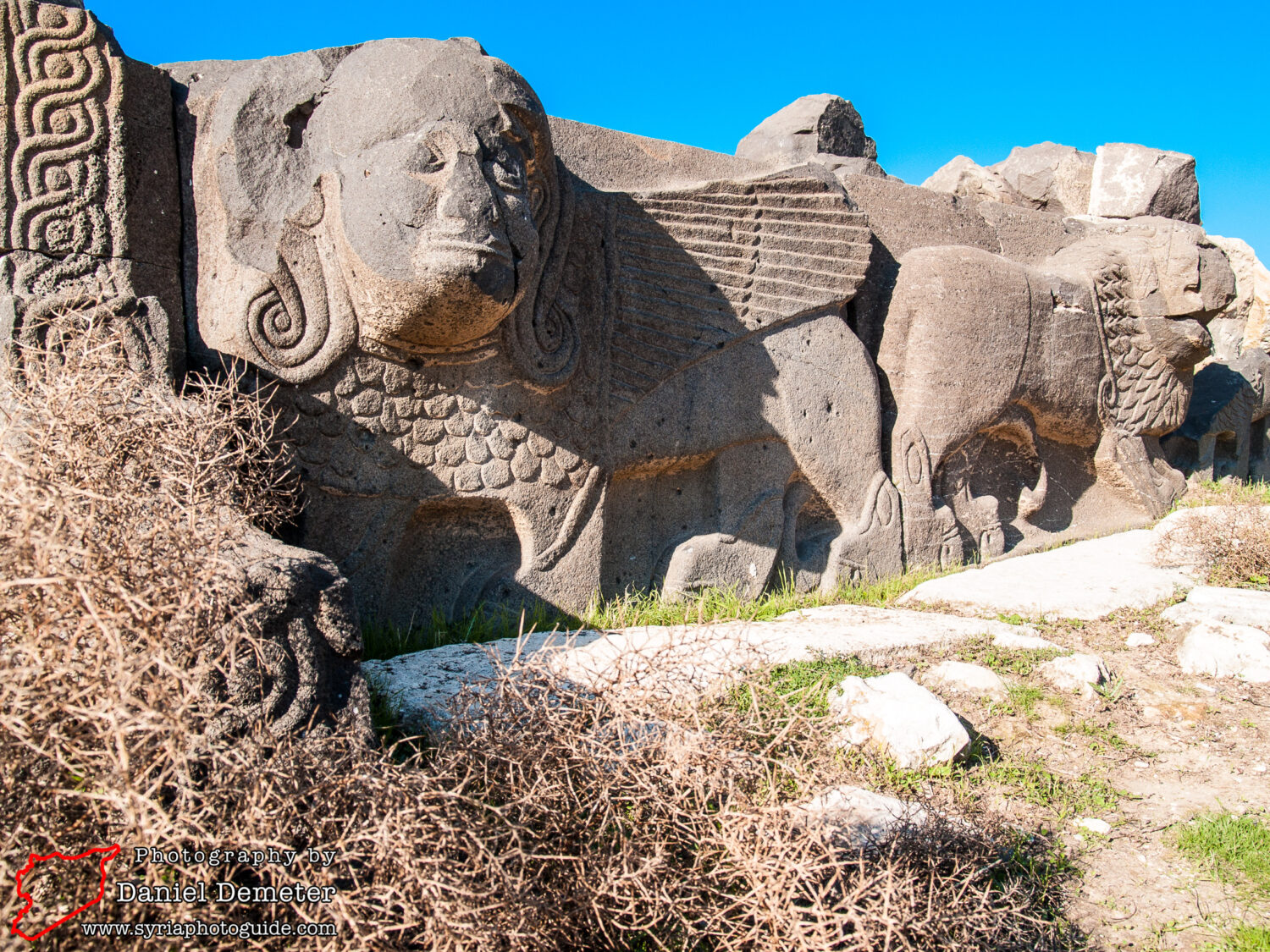
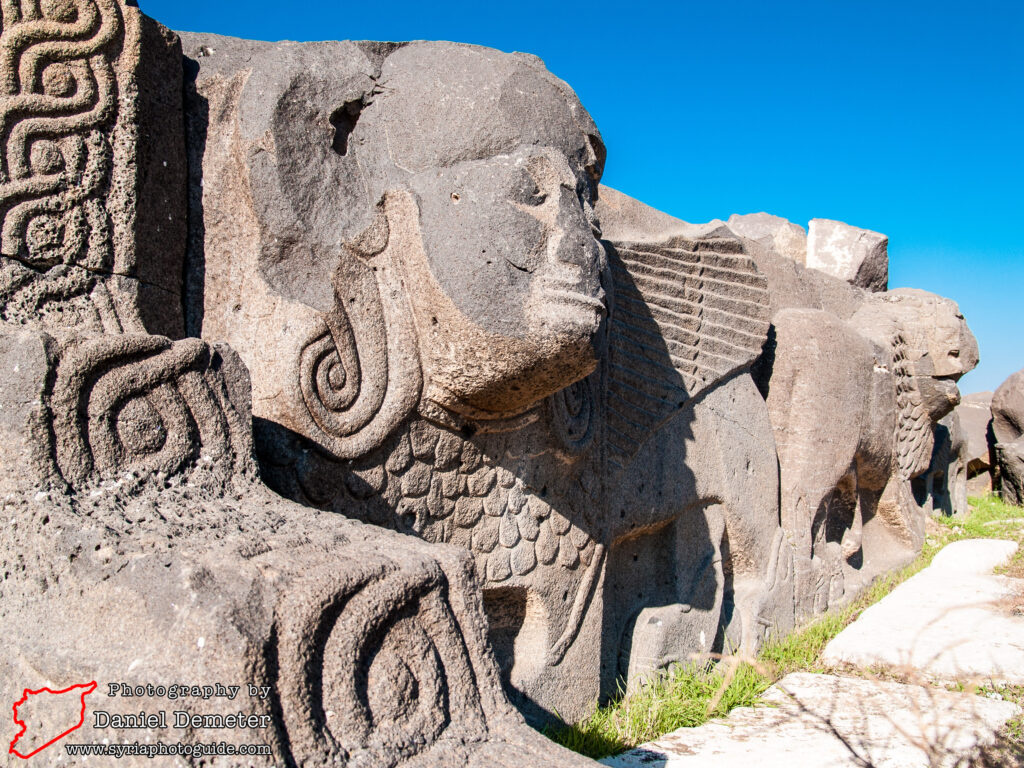
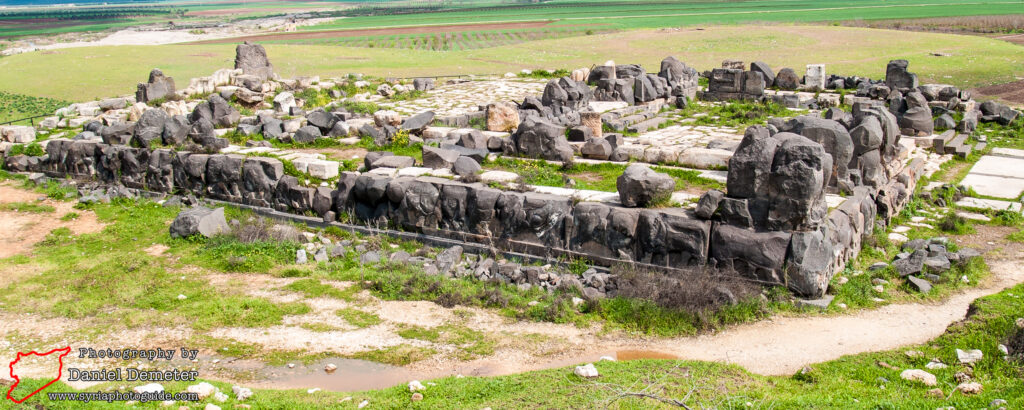
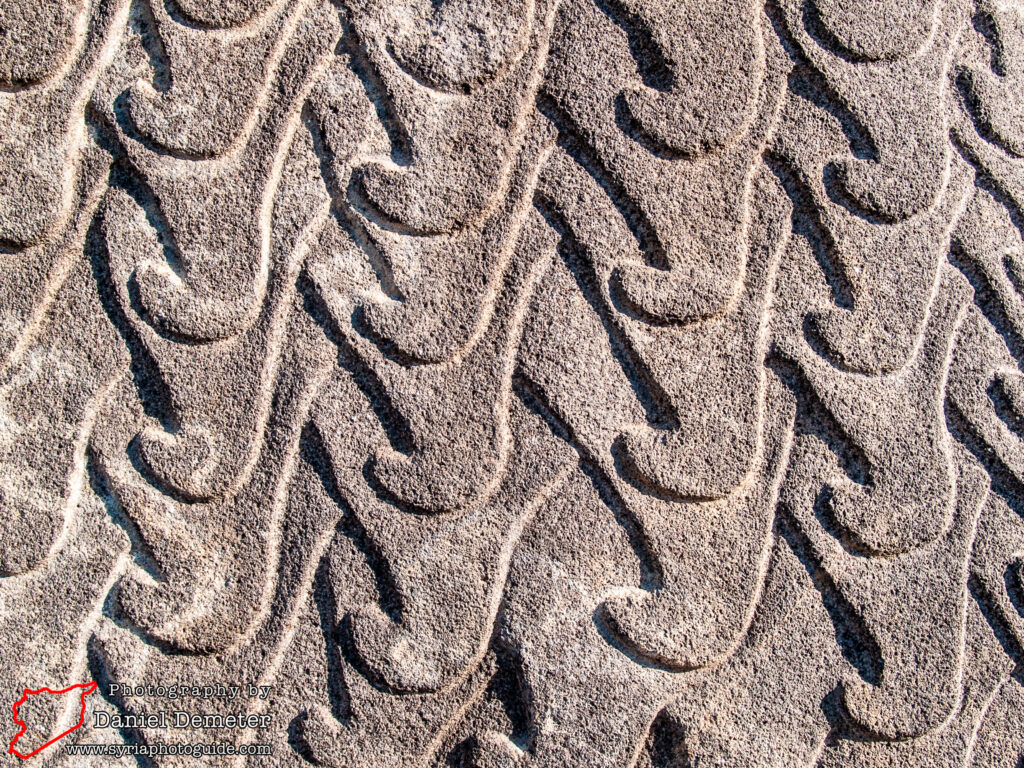
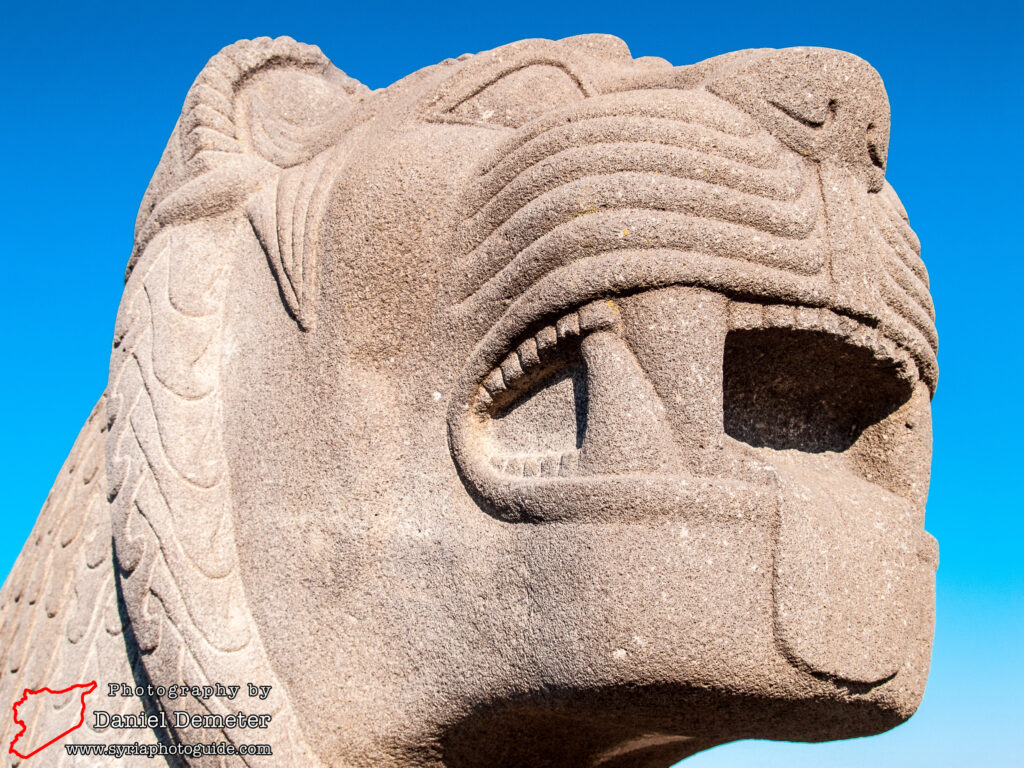
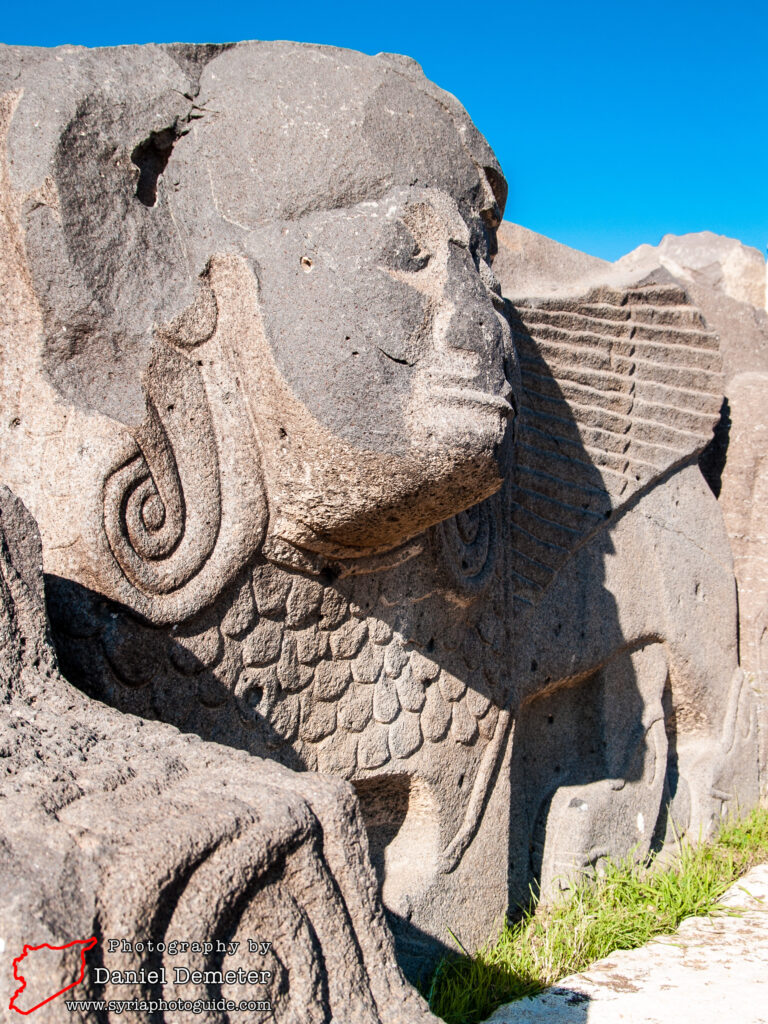
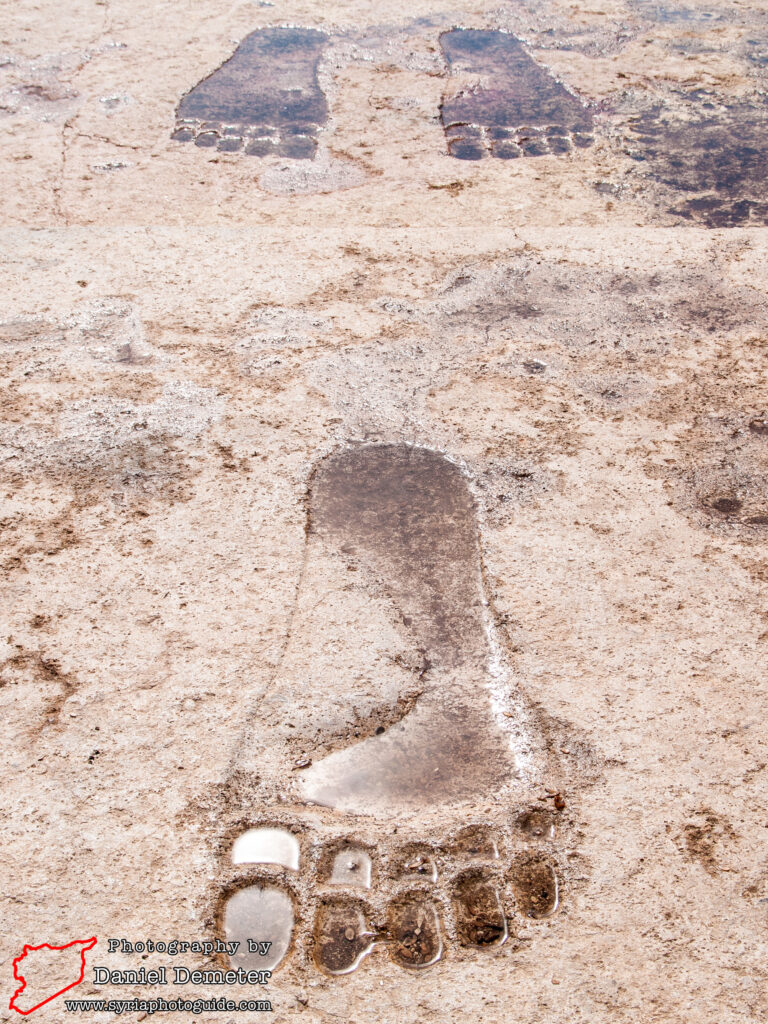
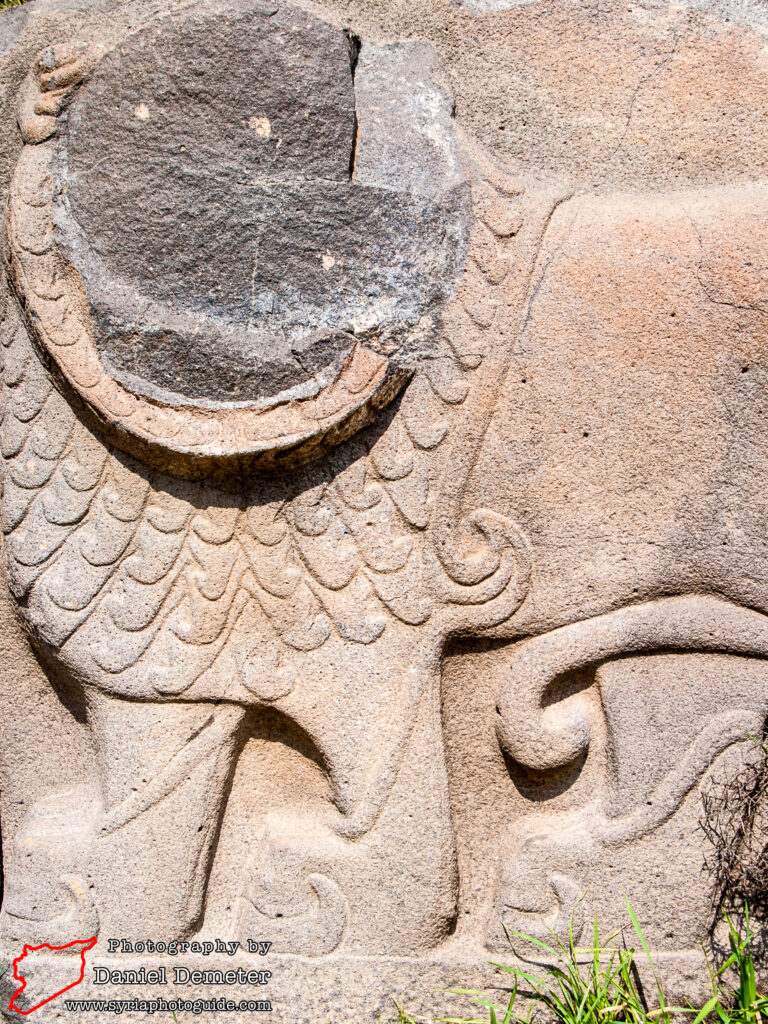
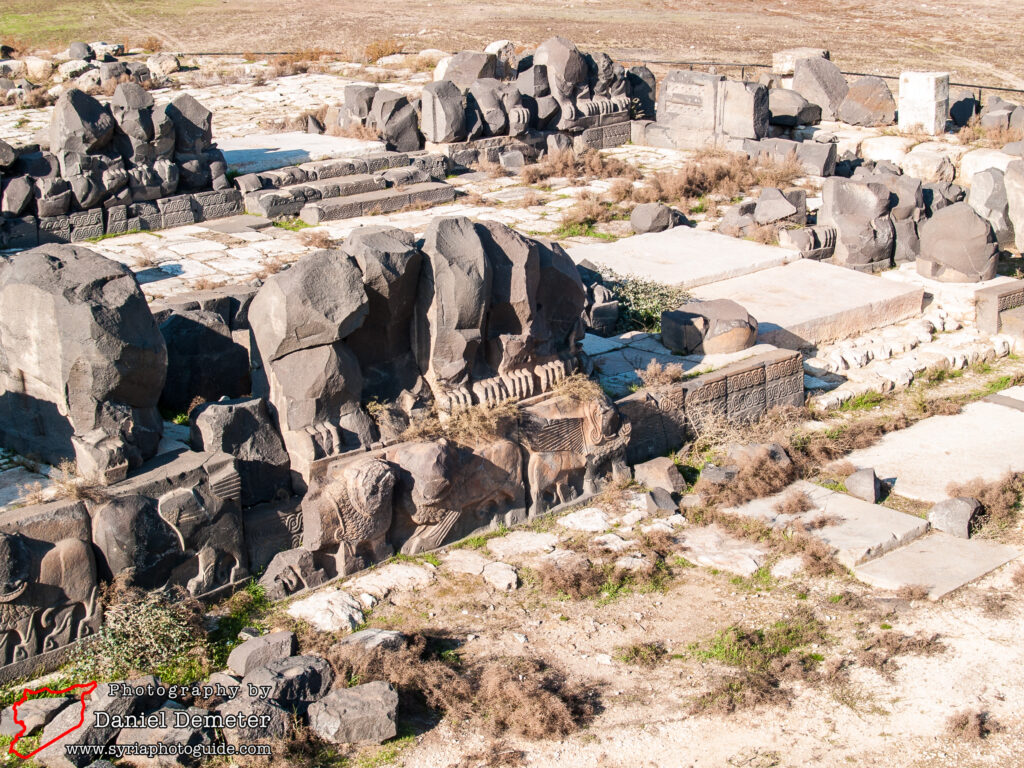
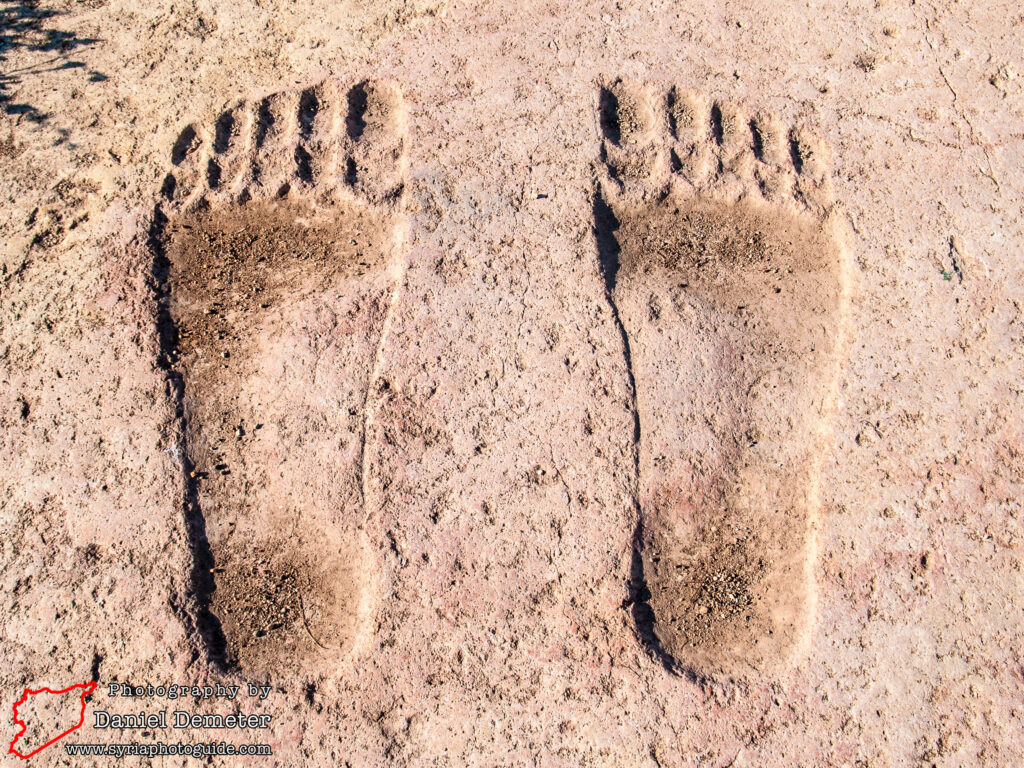
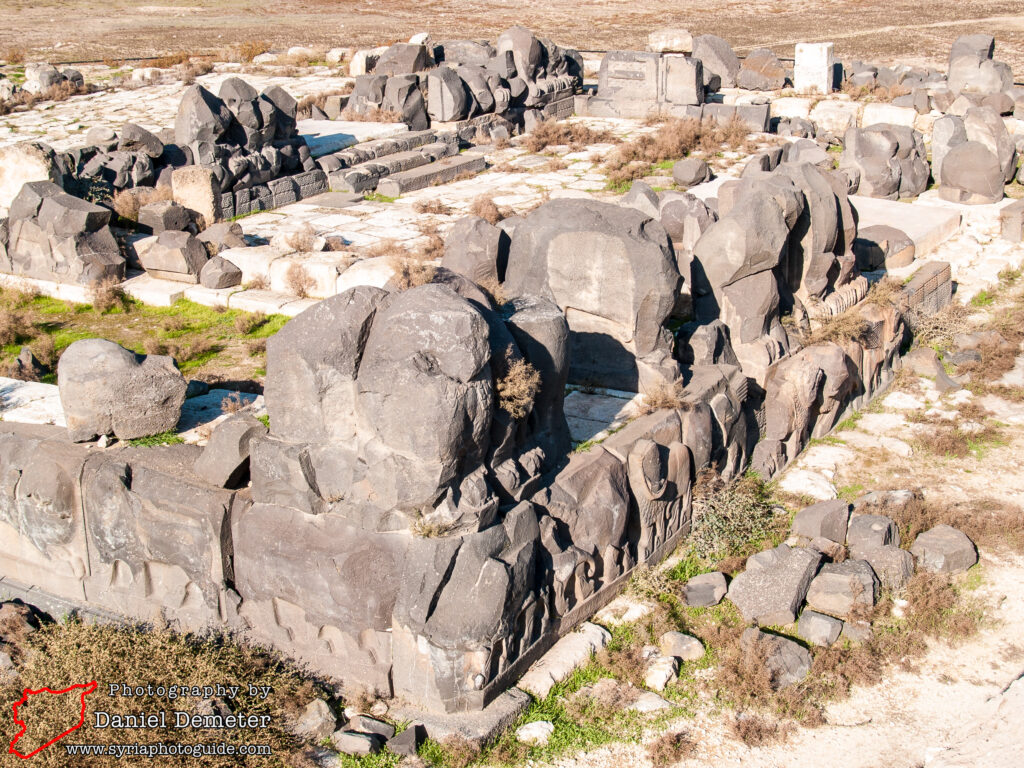
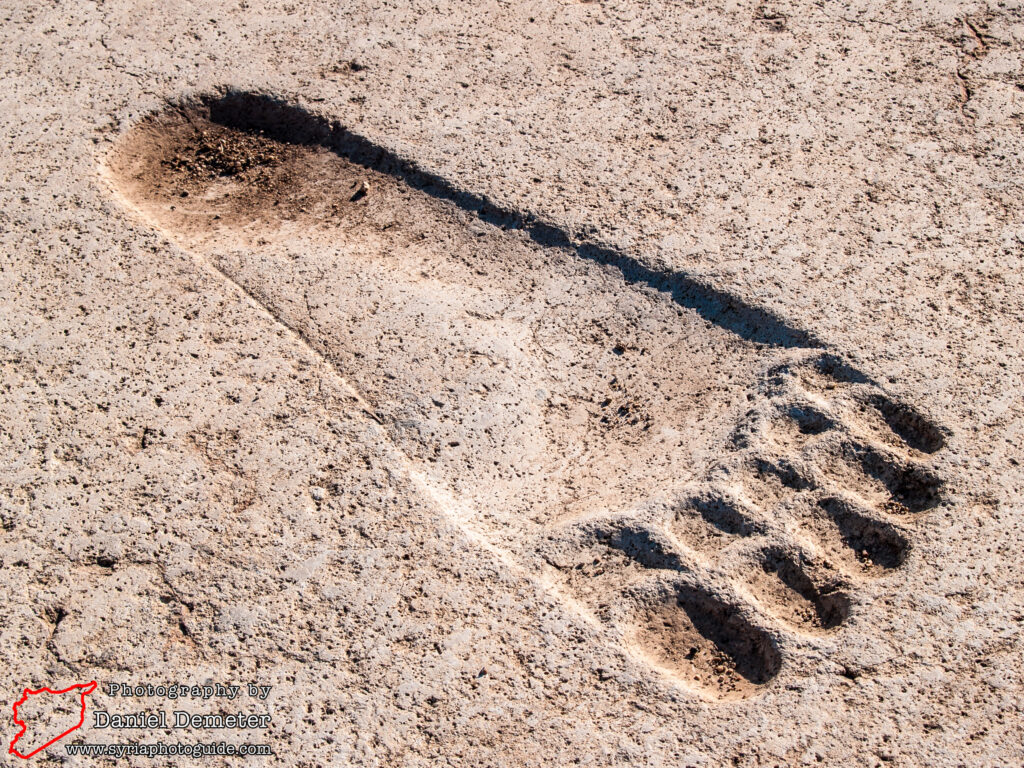
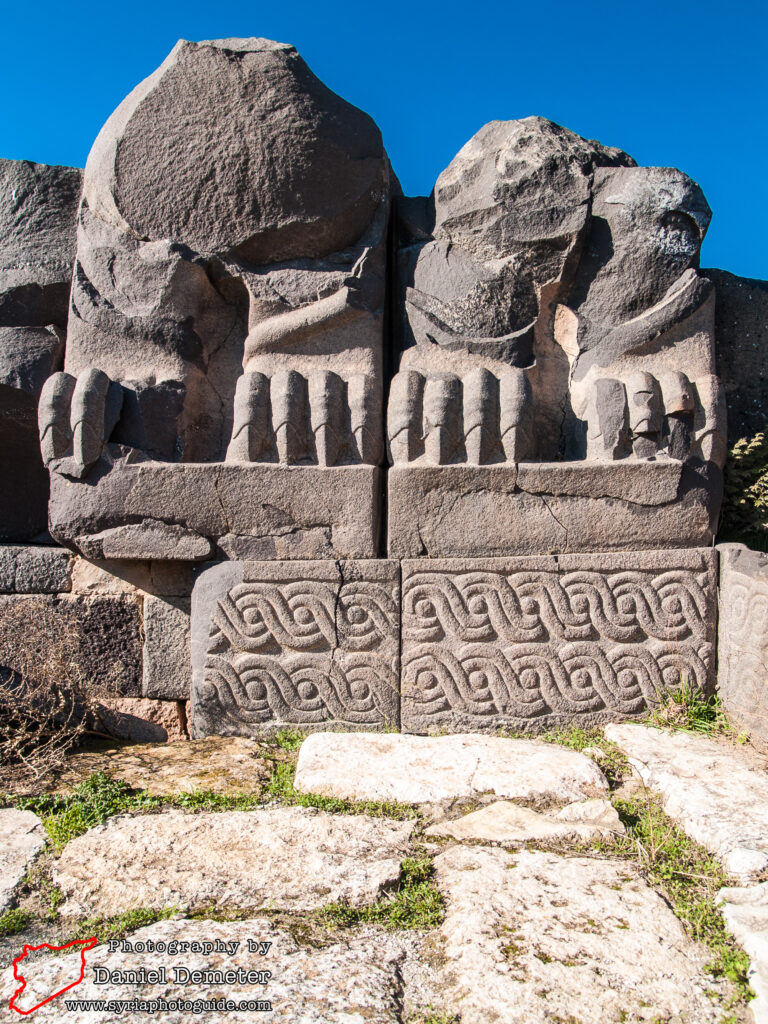
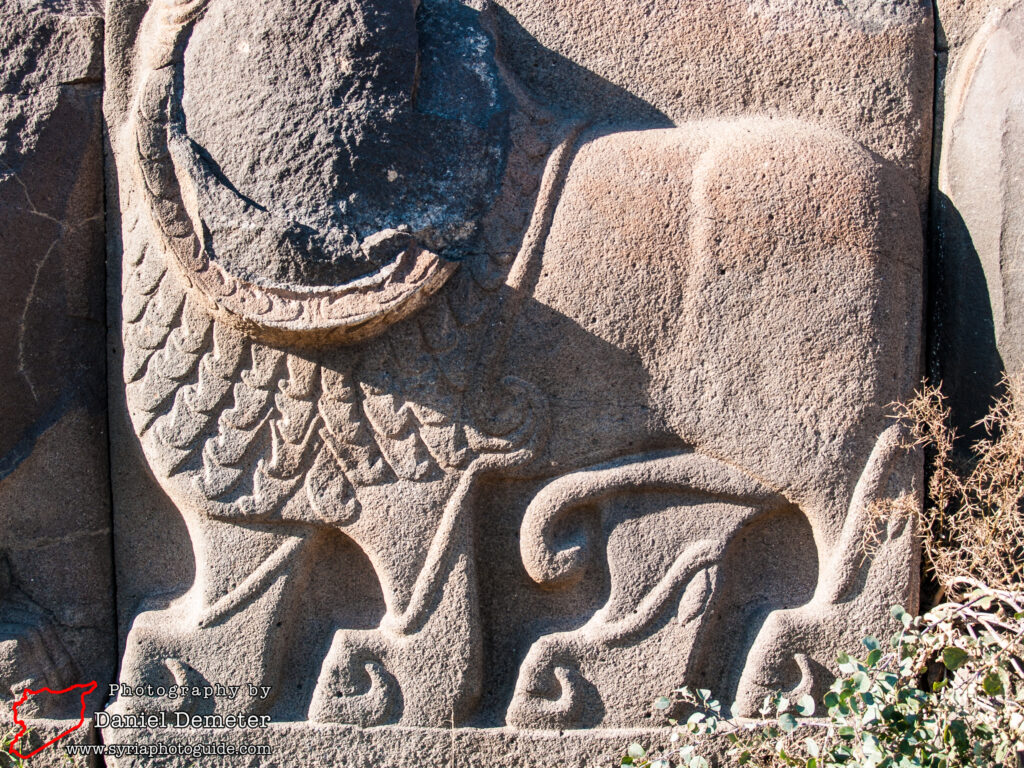
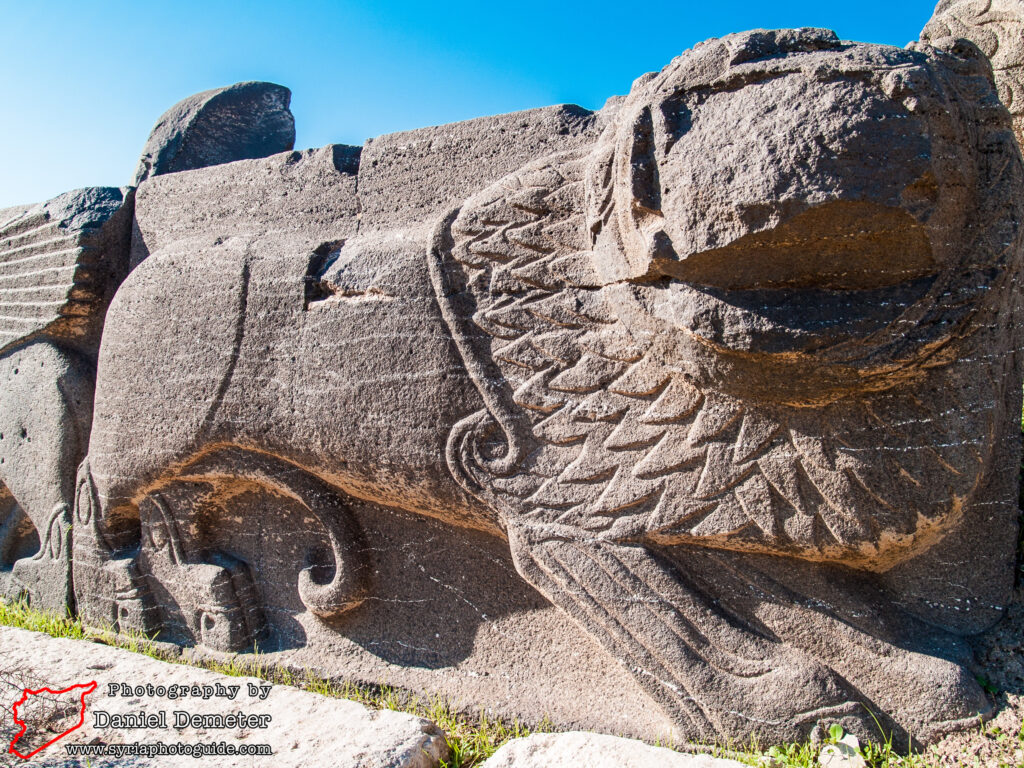
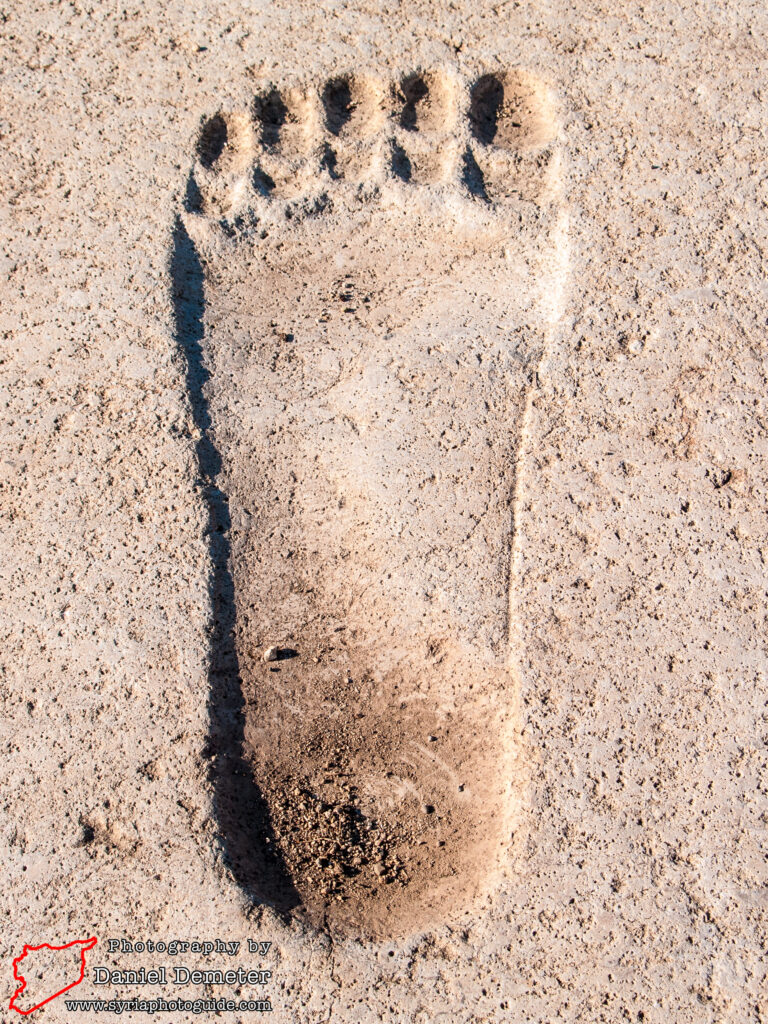
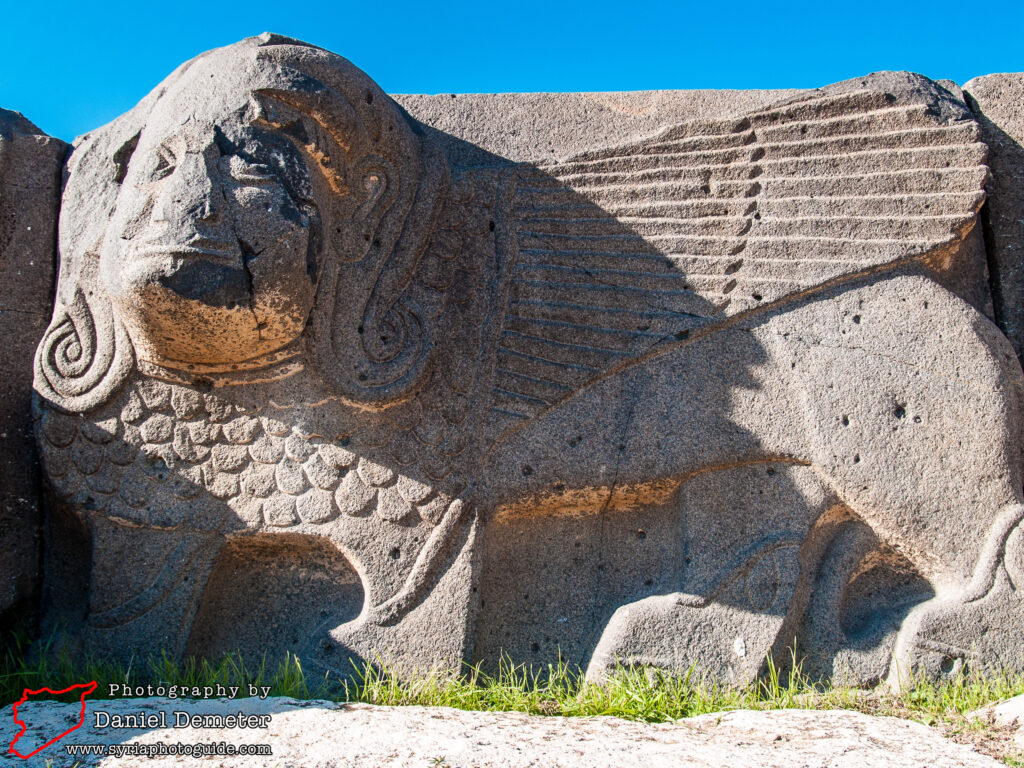
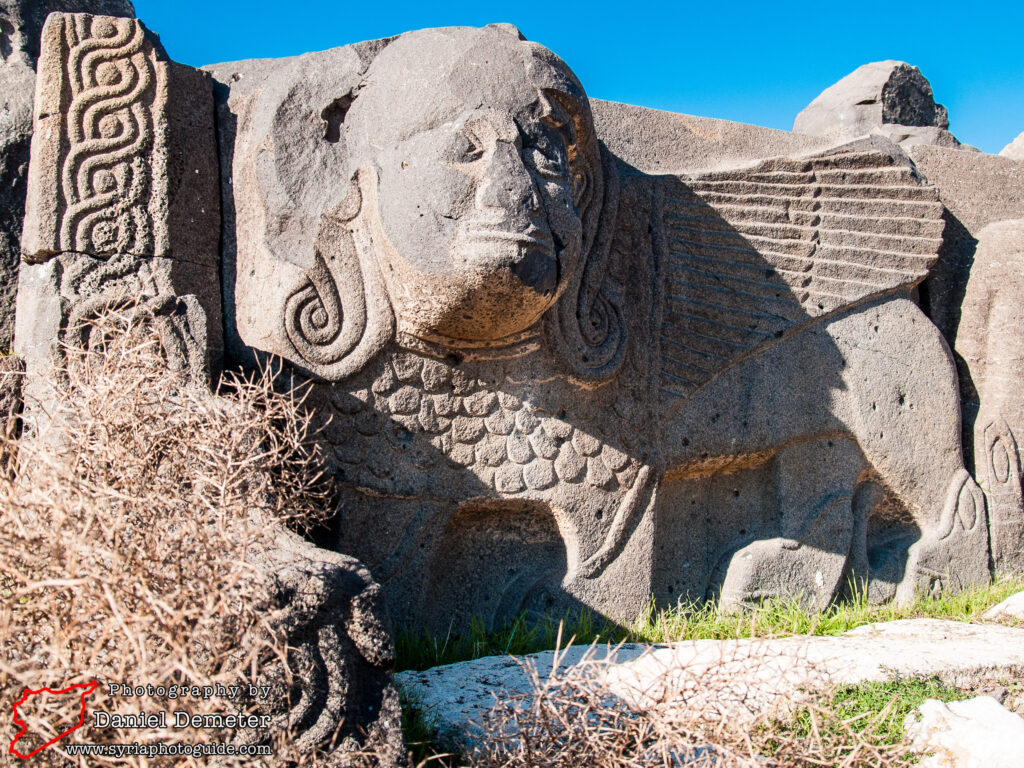
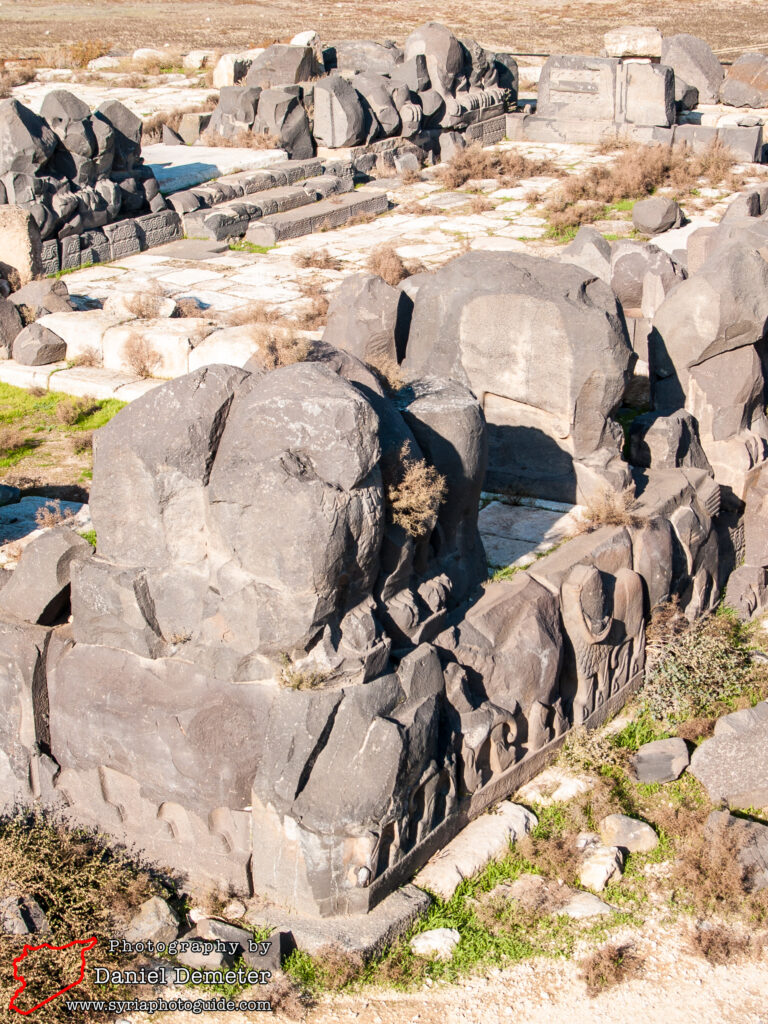

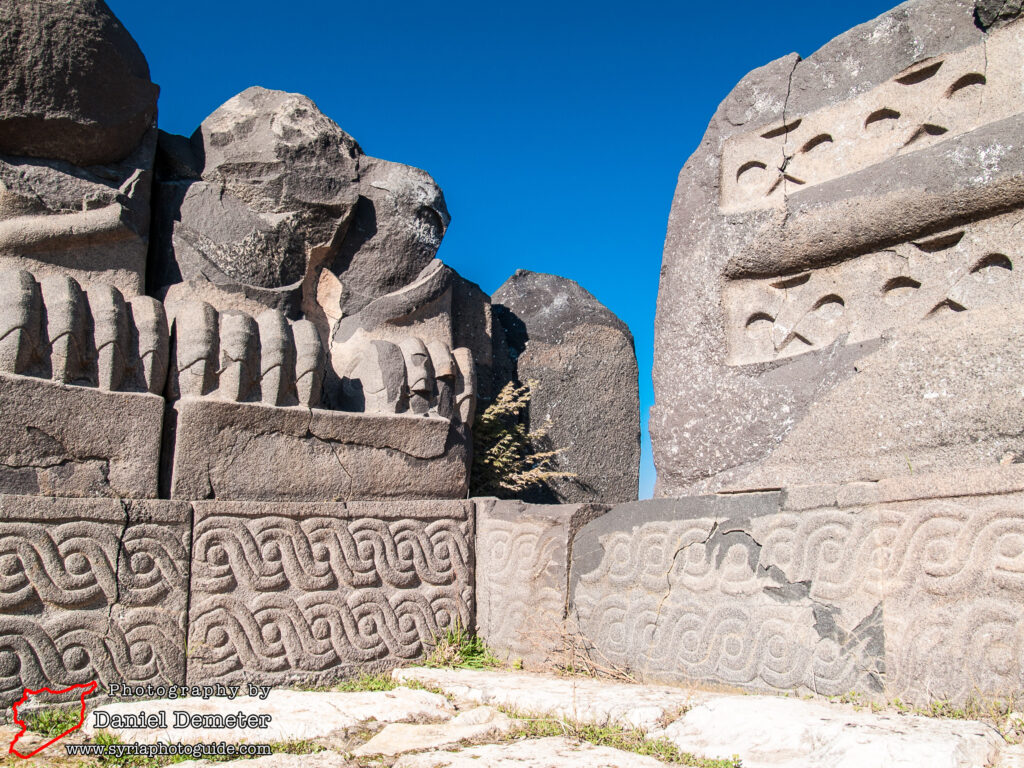

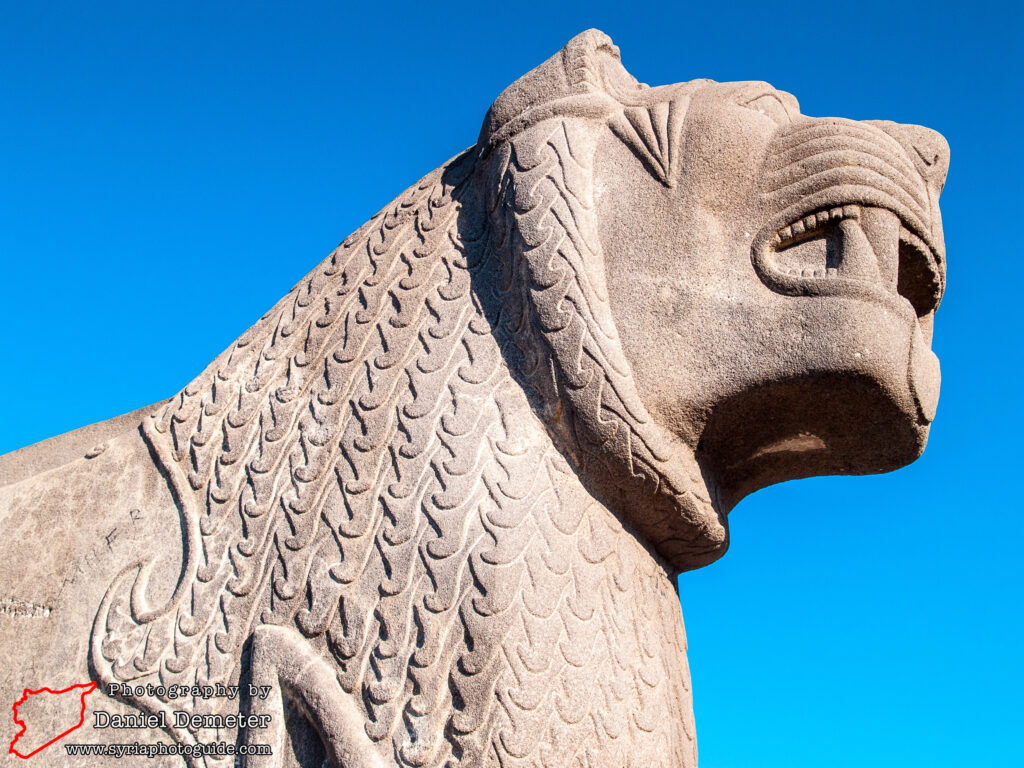
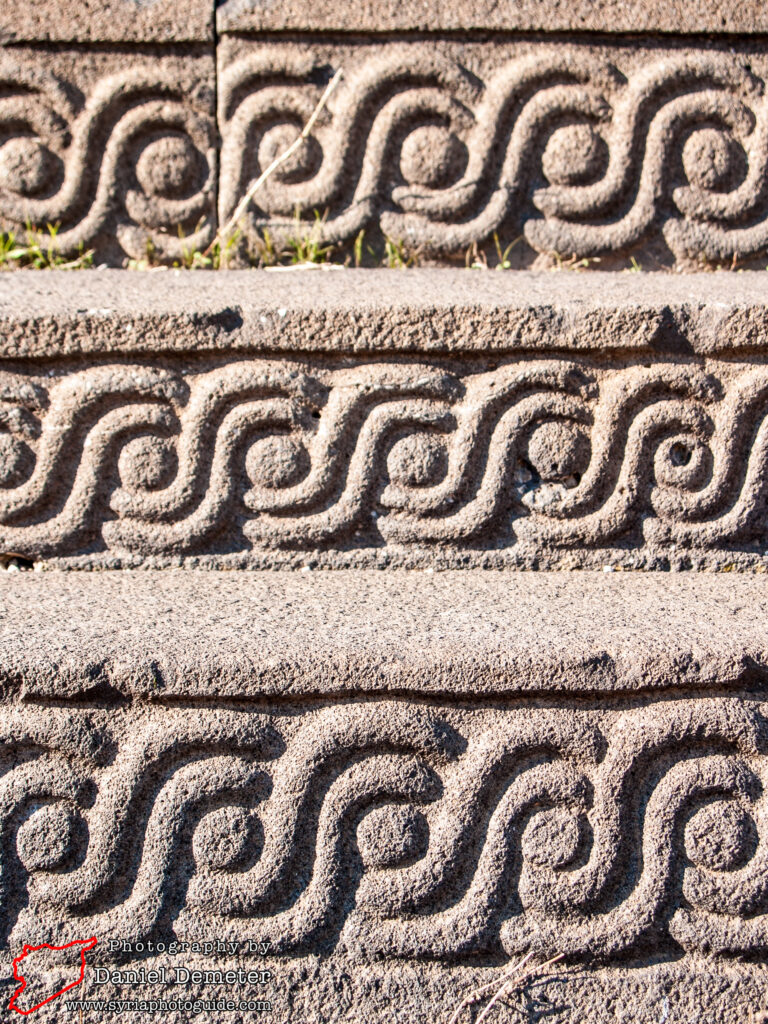
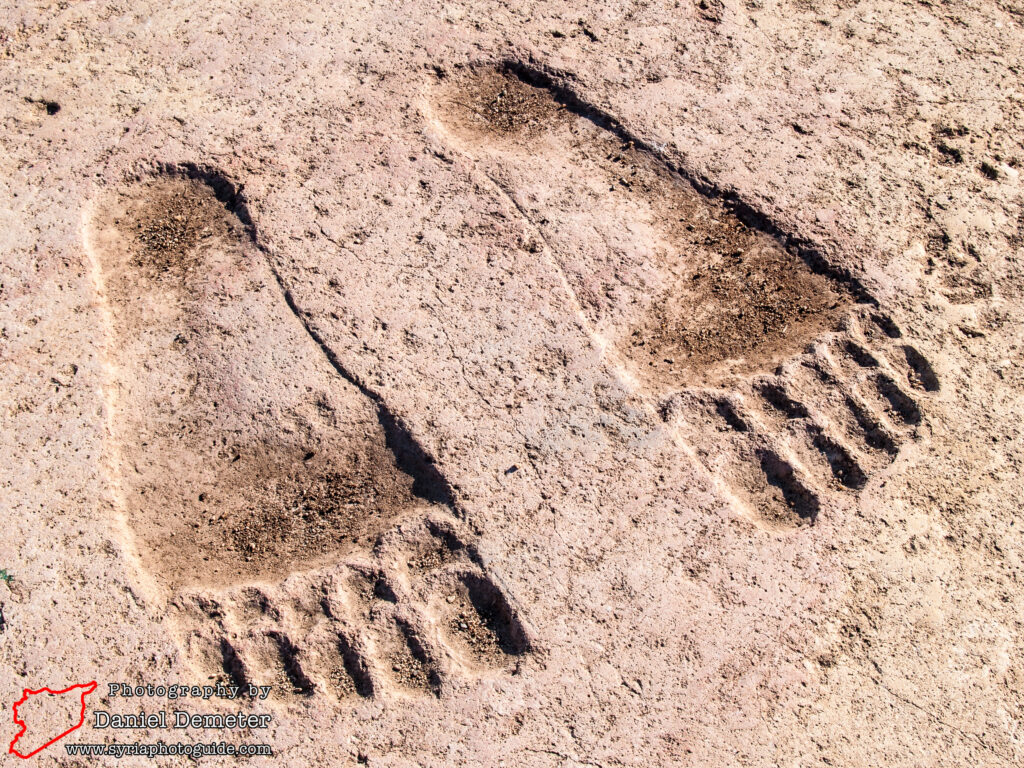
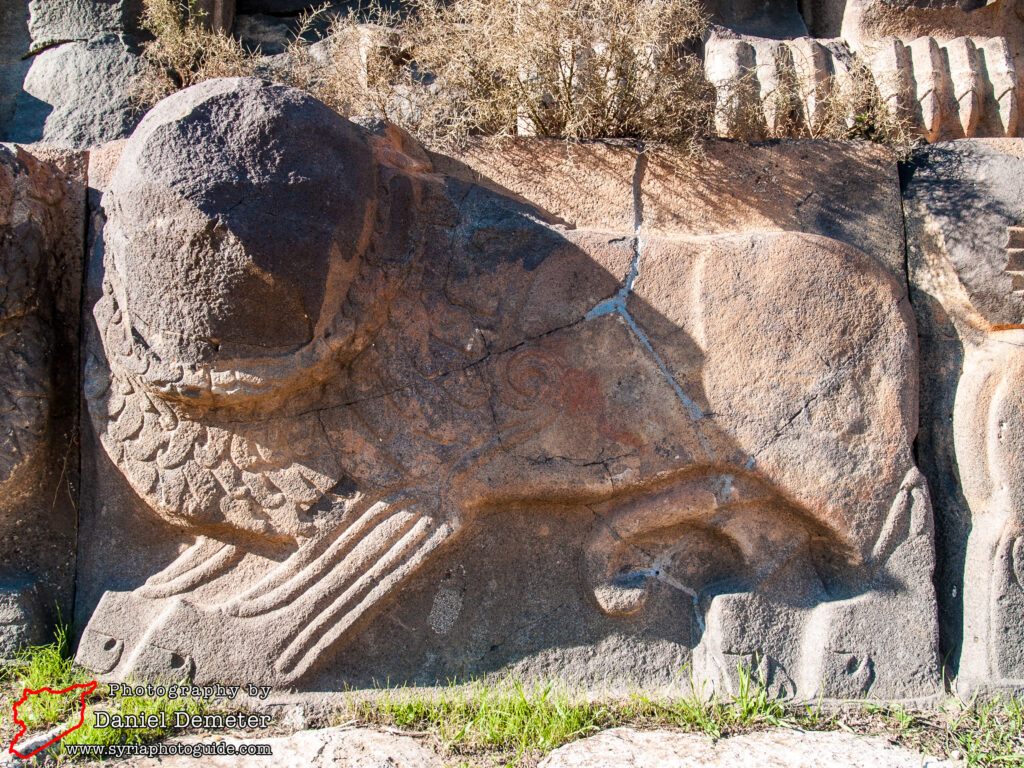
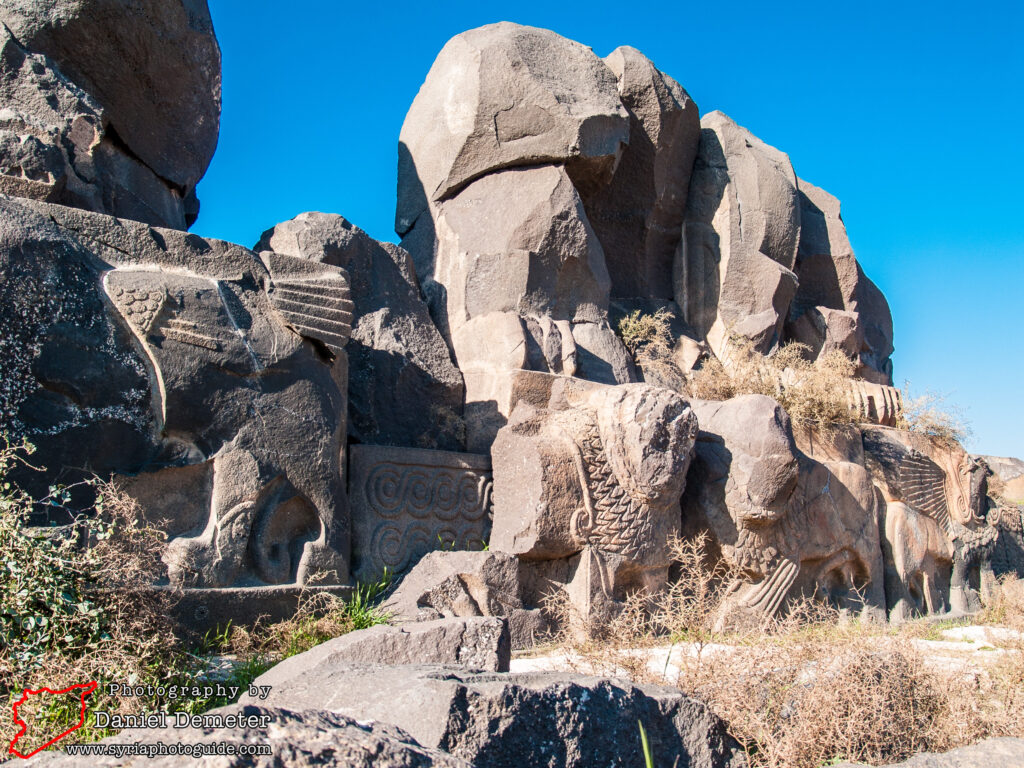

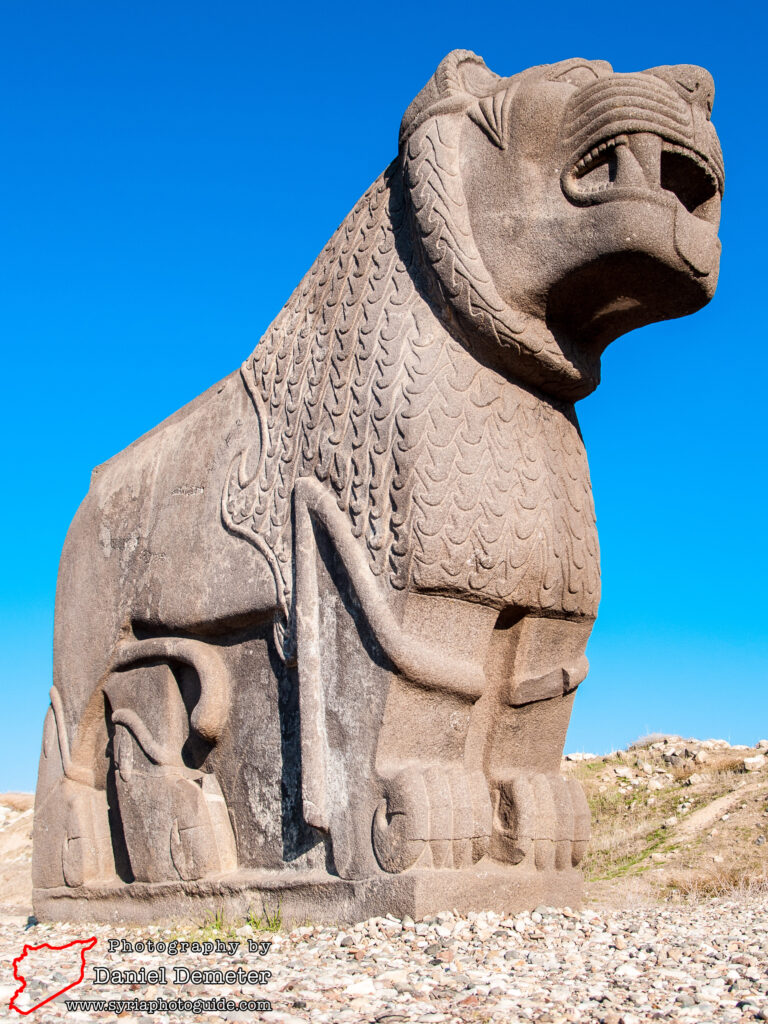
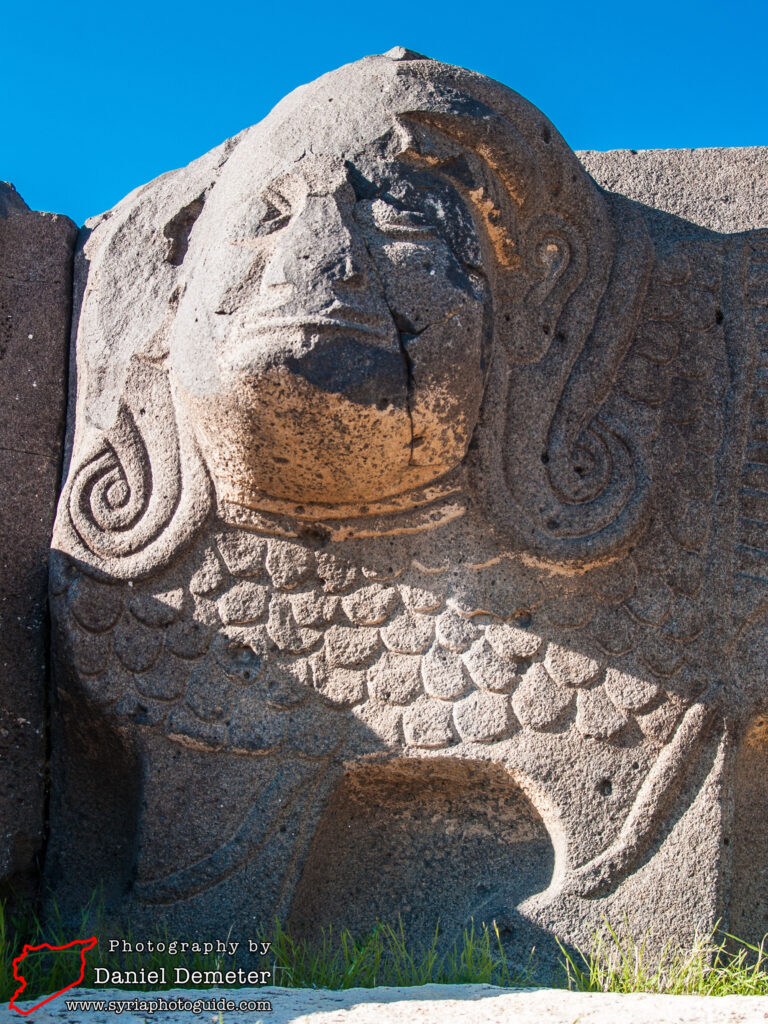
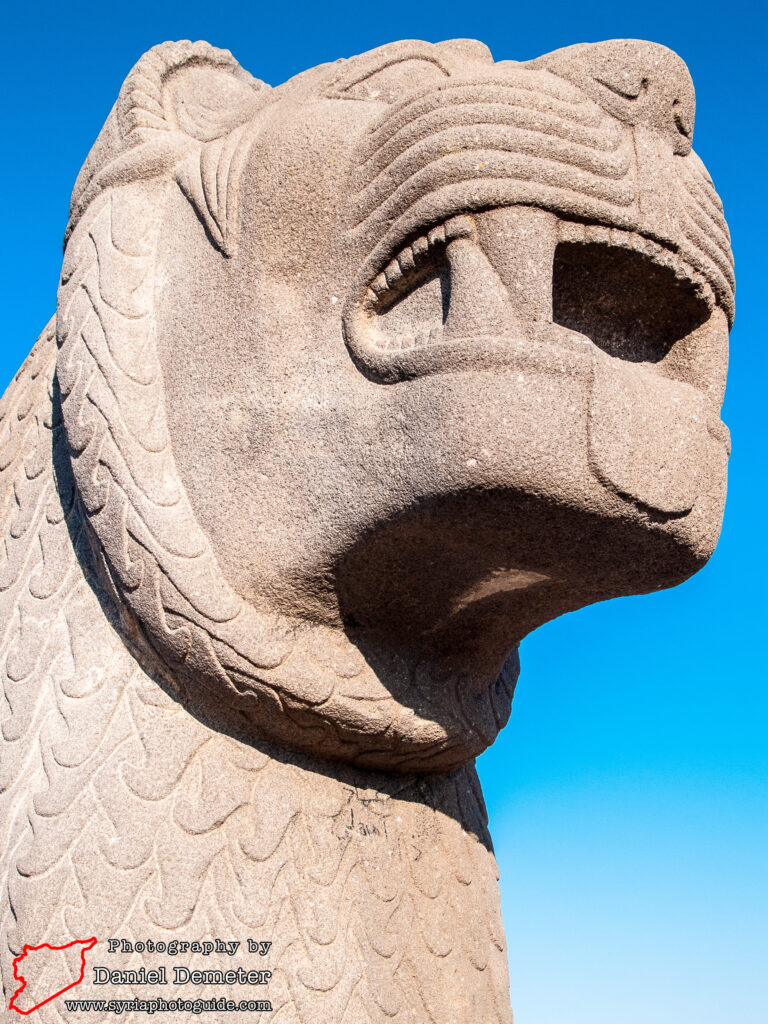
Preservation Status: The temple of Ain Dara (عين دارة) suffered tremendous damage due to a Turkish airstrike on Friday, January 26th, 2018. Much of the best preserved statuary on the temple’s eastern side was reduced to rubble.
Getting There: Getting to Ain Dara (عين دارة) by public transportation poses a bit of a challenge, but it can get you to within a thirty minute walk of the site. The temple is at the top of the archaeological mound located to the west of Ain Dara (عين دارة) village, which is about ten kilometers south of Afrin (عفرين) and seventeen kilometers north of Qalaat Samaan (قلعة سمعان). The easiest way to reach Ain Dara (عين دارة) using public transportation would be a microbus from Aleppo (حلب) to Afrin (عفرين), which takes about forty-five minutes. Microbuses to Afrin (عفرين) leave from Sheikh Maqsoud, a neighborhood in the northwest of Aleppo (حلب), and are very frequent. From Afrin (عفرين), microbuses occasionally run to the Kurdish villages south of here, passing through Ain Dara (عين دارة) village and leaving you about one and a half kilometers to cover on foot. Alternatively, a private driver can be hired in Afrin (عفرين). The Byzantine ruins of Barad (براد) are near enough to consider incorporating into a trip to Ain Dara (عين دارة), and it is also possible to combine a visit to Ain Dara (عين دارة) with Qalaat Samaan (قلعة سمعان) and other nearby sites.
Coordinates: 36°27’34.00″N / 36°51’09.00″E
Transliteration Variants: Ein Dara
Rating: 7 / 10
